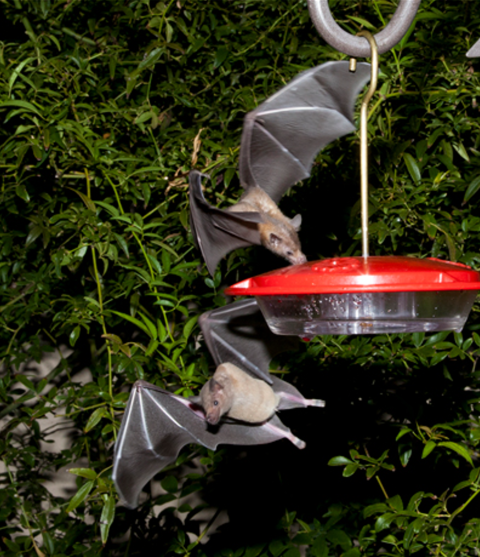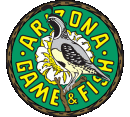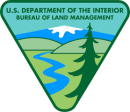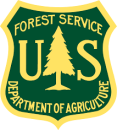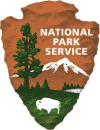Location













States
ArizonaEcosystem
DesertIntroduction
The lesser long-nosed bat (Leptonycteris curasoae yerbabuenae), or LLNB, is one of three migratory, nectar-feeding bat species in the United States. This species pollinates agave and saguaro, which are important socio-cultural resources in both the southwestern United States and Mexico. LLNB winter in southern and central Mexico and migrate north to Arizona and New Mexico for the summer, where they roost in caves to give birth and feed their young, as well as take advantage of seasonally available forage resources to prepare for migration back to Mexico. Until recently, they were federally listed as endangered due to anthropogenic disturbances to their cave habitats and nectar sources.. Roost sites are disturbed by border activities and recreational cavers because of human presence, trash, changes in lighting, temperature and humidity, and destruction of the site. Additionally, invasive species invasive species
An invasive species is any plant or animal that has spread or been introduced into a new area where they are, or could, cause harm to the environment, economy, or human, animal, or plant health. Their unwelcome presence can destroy ecosystems and cost millions of dollars.
Learn more about invasive species introductions, human development, and illegal harvesting further degrades their food sources. In 1988, the LLNB was listed as endangered under the Endangered Species Act, due to low population numbers, with fewer than a thousand individuals thought to be remaining. Recovery efforts by the Arizona Game and Fish Department, the U.S. Fish and Wildlife Service (USFWS) and other cooperating Federal agencies, Bat Conservation International, numerous private landowners, and the Secretariat of Environment and Natural Resources in Mexico led to the LLNB being taken off the endangered species list in Mexico in 2015 and in the United States in 2017.
Key Issues Addressed
In 1988, the USFWS listed the LLNB as an endangered species based on the information at that time that the population had decreased to fewer than a thousand individuals. In 2006, the USFWS implemented a citizen science campaign called the Citizen Science Bat Monitoring Network Pilot Program around the Tucson basin to increase understanding of LLNB phenology, feeding patterns, and distribution within an urban environment. Key conservation challenges include direct impacts to bats in their cave habitats and a lack of baseline understanding on distribution and habitat use. Additionally, the availability of food sources, nectar from cacti and agave plants, was variable due to drought and other weather conditions, invasive species introductions, human development, and illegal harvesting. LLNB have increasingly used backyard hummingbird feeders as a complementary food source, especially when native forage resources such as saguaros and agaves have reduced availability. This campaign has served to educate the general public about the importance of nectar feeding bat species in the area.
Project Goals
- Document migration timing by expanding a USFWS-managed citizen science program
- Identify late summer occupancy patterns and document geographic shifts over time
- Utilize observations from the public to determine bat feeding and roosting locations within Tucson
- Promote public knowledge of this important pollinator
Project Highlights
Citizen Science Impacts: The citizen science program provided information used for evaluation of the species’ status that led to the delisting of the lesser long-nosed bat from the Endangered Species List.
- Outreach and Education: The Citizen Science Bat Monitoring Network Pilot Program began in 2004 with over 50 initial volunteers recruited through a public presentation. Outreach efforts included public presentations, newspaper articles and press releases, information distributed through homeowner associations, Audubon Society, local bird stores, announcements, and word of mouth. Education and outreach information is given to volunteers who allow bat netting at their homes to foster a greater appreciation of bats and their environmental value. The program is ongoing with around 100 volunteers on average annually, including participants from new geographical regions throughout the greater Tucson area.
- Bat Sighting Reports: Working closely with the USFWS, volunteers in Tucson monitor hummingbird feeders in their backyards. They record bat presence observations and also measure nectar levels in the evening and morning to document feeding activity as bats feed at night. Volunteers submit their data through an online form by the Arizona Game and Fish Department, which has compiled a database for geographical distribution, phenology, and activity patterns.
- Movement Tracking: USFWS and AGFD biologists use participant-informed bat sightings to select individual bats for radio telemetry. Participant hosts are not permitted to handle the bats. Biologists went to sighting locations to confirm the species and trap bats using mist nets. LLNBs are fitted with temporary radio transmitters on their backs using temporary surgical adhesive. Personnel then track bats at night while stationioned at high points or from a truck to determine movement patterns around Tucson and to locate important day roosts. Transmitter batteries last 14 days and can fall off anytime after initial temporary gluing. The transmitters can last up to several days, or may fall off after just a few hours due to social interactions at roosting sites, where they are located and recovered by biologists.
Lessons Learned
The Citizen Science Bat Monitoring Network Pilot Program resulted in more extensive information about bat behavioral patterns than could have been gathered by biologists alone. Data collected at a city-wide scale, including date/time of presence, nightly activity, and behavior, would not have been possible otherwise.
For example, citizen scientists found that bats generally arrive in August or early September and depart the second week of October with brief sightings also observed in April or May. Data shows that bats use low-density and high-density urban areas for food and fly near washes and dark areas, sometimes traveling up to 40 miles one way in a single night. Four daytime roosts have been located around the Tucson area. This long-term information directly supported federal down-listing efforts and set a precedent for future monitoring programs.
This program enables the public to collect valuable information from their own backyards, using their own feeders. Hummingbird feeders are low cost and easily accessible which facilitated a widespread volunteer network across the greater Tucson area. Participation in the project gives local citizens ownership in the project and in bat conservation.
Telemetry can be fairly labor and cost intensive and can have technical limitations. For example, radio transmitter range can be shortened by urban area noise. Additionally, some radio transmitters tend to fall off too quickly for location readings and model options are limited due to the small body size of LLNBs. Alternatively, GPS recorders can collect precise, continuous locations but they are more expensive and must be retrieved to download the data.
Maintaining volunteers in the program is challenging, so continuously recruiting people is necessary. To sustain participation, showing appreciation by hosting year-end parties and giving positive feedback was effective. Another difficulty was a lack of submitted reports of findings, which limited data availability. Recruiting more participants and encouraging them to submit a report will extend the range of data for a more accurate representation. Participants, as well as the general public, have gained a greater appreciation of LLNB and their ecology.
Next Steps
- Increase bat monitoring program to a wider audience to increase sample size and geographical range of data
- Expand public education about bats through recruitment and other outreach tactics
- Improve transmitter attachment, range, and longevity on bats for more extensive movement data
- Host more bat-catching gatherings to increase sample size for telemetry
- Apply citizen science programs more extensively for research purposes
Funding Partners
- US Fish and Wildlife Service, with in-kind support from:
- Town of Marana
- Arizona Game and Fish Department
- Local bat biologists
Resources
- Lesser Long-Nosed Bat Recovery Plan (1994)
- National Geographic: First Bat Removed from the Endangered Species List
- U.S. Fish and Wildlife Service News Release
- Lesser Long-Nosed Bat Delisting Questions and Answers
- Lesser Long-Nosed Bat Forage Phenology Monitoring Protocol
- Information from the Forest Service on Pollination from Bats
- News Article on Binational Agave and Bat Restoration
- Bat Conservation International Article on Lesser Long-Nosed Bats
- News Article: UArizona-Based Network Looks Out for Lesser Long-Nosed Bat
Case Study Lead Author
Sierra Riker, CART Intern, Northern Arizona University
Suggested Citation
Riker, S. R. (2019). “Citizen Science for Conservation of the Lesser Long-Nosed Bat.” CART. Retrieved from https://www.fws.gov/project/conservation-lesser-long-nosed-bat.


